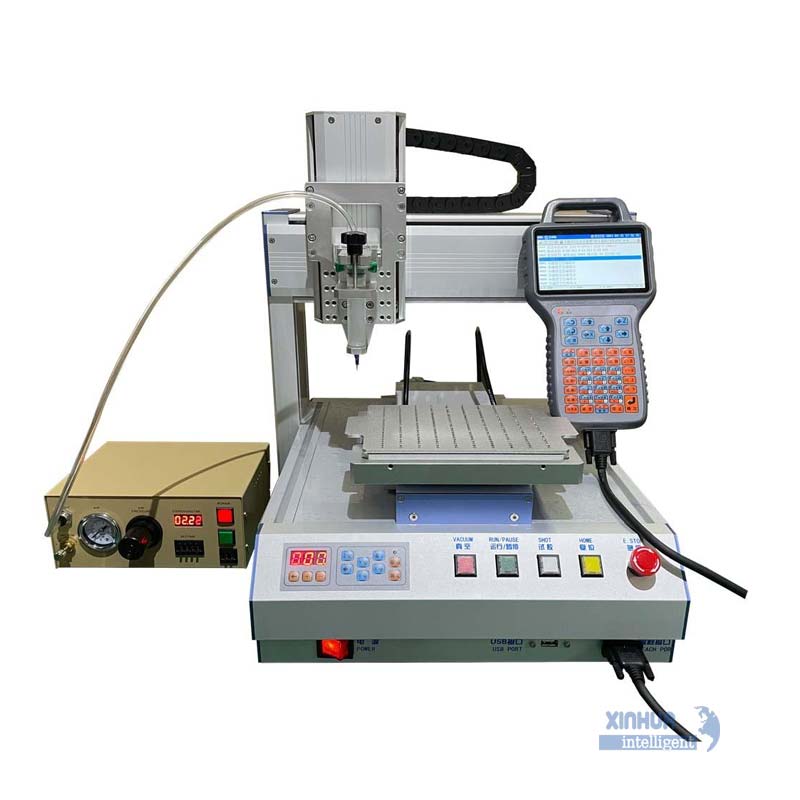The glue dispensing machine process involves precisely applying adhesive material using specialized machines that control the flow, volume, and placement of glue onto surfaces or parts. This process is used in various industries such as electronics, packaging, woodworking, and automotive for accurate, consistent, and efficient adhesive application.

Here is an overview of how the glue dispensing machine process typically works:
-
Preparation of Adhesive: The adhesive (glue) type is chosen based on application requirements, including factors like viscosity, drying time, and material compatibility. Some machines dispense hot melt glues, others handle UV curable, epoxy, or acrylic adhesives.
-
Adhesive Delivery Mechanism:
-
Adhesive is loaded into a reservoir or cartridge.
-
A pump or piston mechanism (positive displacement pump or gear) applies pressure to move the adhesive through valves and into the dispensing tip.
-
-
Control of Dispensing:
-
The machine precisely regulates the amount and flow rate of glue via programmable controls.
-
Factors like stroke length, pump speed, air pressure, or electric controls adjust the glue flow to ensure minimal waste and uniform application.
-
-
Application & Movement:
-
The dispensing tip, mounted either manually or on automated robotic systems with multiple axes (X, Y, Z), applies the glue in predetermined patterns and locations.
-
Advanced systems can use dual-robot setups or integrated vision systems for alignment and quality checks.
-
-
Curing or Bonding:
-
In some processes, adhesives are immediately cured using UV light or heat integrated into the dispensing station.
-
The glue bonds the materials effectively as designed for durability.
-
-
Quality Control & Automation:
-
Sensors and cameras monitor parameters like adhesive viscosity, flow volumes, bead patterns, and substrate temperature.
-
Programmable logic controllers (PLCs) coordinate the entire process ensuring repeatability and consistency.
-
In summary, glue dispensing machines automate and optimize the adhesive application process by controlling every aspect from glue delivery to precise placement and curing, improving efficiency, reducing waste, and ensuring strong bonding in industrial manufacturing.
This process varies depending on the type of glue, machine technology (manual, semi-automatic, or fully robotic), and the specific production environment or product requirements.
